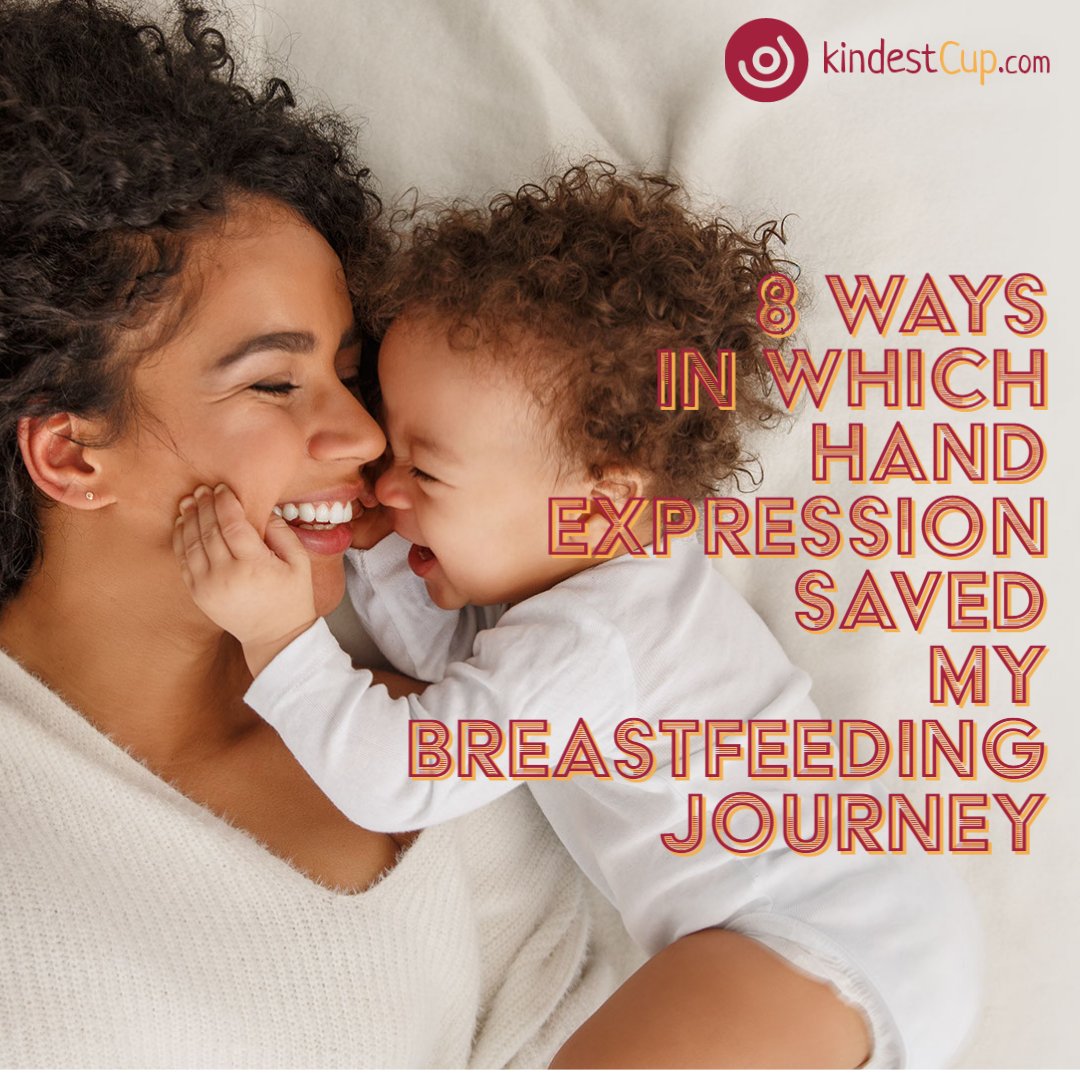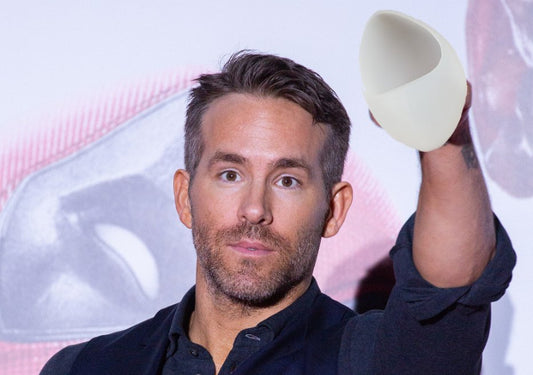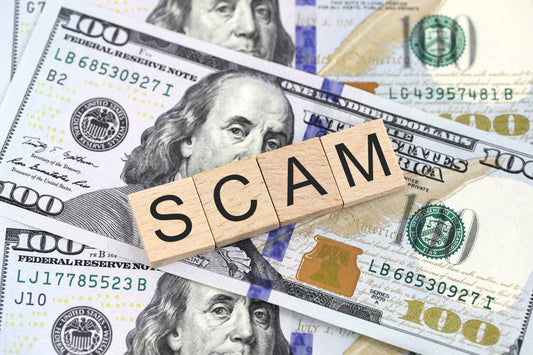You might have heard about hand expression in a prenatal class. The part where they teach you that you're probably already making milk and that you can collect and freeze some colostrum around 36-37 weeks or use antenatal expression to kickstart labor. Or maybe you hand expressed a few drops of colostrum in the early days and marveled at the fact that *something* is coming out of your nipple. If you're like me after my first baby, you probably mostly forgot about hand expression after that... at least until you had a blocked duct and were told to squeeze your already painful breast with your hand to move the clog along. Not pleasant!
However, what if I told you that there is a lot more to hand expression than harvesting drops of colostrum and unclogging ducts?
I ended up mostly using hand expression to manage my milk supply and keep my breasts comfortable. Even after I went back to work (yup, I never pumped at work).
Although I had a good quality electric pump, I preferred hand expression for several reasons. In fact, I am sure that would not have breastfed for 5+ years, if I hadn't been able to manage my breasts on my own, with my hands.
Here are some important things I learned:
1) Hand expression is the cure to 'perceived inadequate supply'
Concerns about milk supply is one of the most common frustrations with breastfeeding. However, recent research shows that we are terrible judges of our own milk supply... There is no relationship between how much milk we think we make and how much milk we actually make, see Galipeau et al. 2017.

I remember a day when I almost threw in the towel because I thought I didn't have enough milk... My baby was around 2 months old and wanted to nurse non-stop. My breasts felt 'deflated' compared to the engorgement I had experienced in the earlier weeks. When I tried to pump, I barely filled the bottom of the bottle... I seriously thought that I had lost my milk supply! Before freaking out completely, I decided to hand express to check if there really wasn't any milk in my breast. At that point, my only experience with hand expression was expressing a few drops of colostrum before birth. Low and behold, I squeezed my breast and there was milk. I squeezed a few more times and milk shot across the room... Seeing and feeling my milk when I was in doubt allowed me to get over my initial and all-consuming feeling of inadequacy. I could look at the situation more objectively and concluded:
a) My baby probably wanted to eat all the time because she was going through a growth spurt. Her weight was going up and she had plenty of wet and poopy diapers, so there really wasn't any 'real' reason to doubt my supply.
b) My breasts must have finally figured out how to make plenty of milk without getting overly full and uncomfortable. That's actually a good thing!
c) Never use a pump to judge your milk supply.
Disclaimer: I'm not saying that low supply doesn't exist. However, based on the available research, we are bad a diagnosing it ourselves, so we need help. The best person to consult with is a professional lactation consultant (IBCLC).
2) Hand expression gave me confidence and freedom
Once I realized that hand expression works not just for colostrum but also for mature milk, I gained a whole new new level of breastfeeding self-efficacy (see also Omekara, 2019). I realized that I didn't have to depend on my baby or the pump to manage my milk production. I could take care of my own lactating body in practically any situation.

This empowering revelation affected the choices I made as a new mom. I was more likely get out of the house for one or two hours and enjoy doing non-baby things. This lifted me out of isolation. With hand expression, I didn't have to worry about finding a suitable place to pump when I was gone, in case I got uncomfortable. I didn't have to bring a bag full of pump parts and worry about how and where to clean them... Once I figured this out, I didn't even have to worry about leaving milk for baby before I left... I could just go, hand express milk whenever and wherever to stay comfortable, and come home with a freezer baggie full of milk for next time.
I still prioritized breastfeeding and fed baby at the breast for the vast majority of feeds. But giving myself a little breathing room and some extra options made the whole experience so much more manageable and less overwhelming. I would have not made it to 5+ yrs without this.
3) Hand expression restored my body image
Lactating breasts are weird... sometimes it can feel like your chest is inhabited by aliens... Where our normal breasts used to be, we now have food production facilities that are attached to our bodies... And the person who is supposed to manage them is a baby... (who is cute, but also a little weird)
Before I got into hand expression, I often felt alienated from my own lactating body... Pumping made that feeling even worse.
Hand expression allowed me to literally get in touch with my own body and discover and integrate my milk making superpower. Lactating was no longer something that happened to me, it was something that I did.
Bye bye, aliens.
4) With hand expression I regulated the timing of my milk production
Ok, this is anecdotal. Please, someone research this!
I went back to work after 1 year with my first and after 10 months with my second. Yes, I'm in Canada. Both times, I exclusively used hand expression to manage by breasts throughout the workday.
I started out expressing milk 4-6 times during the work day to keep myself comfortable. As the days went by, I could go longer stretches before I had to express and after 2-3 weeks I could make it through the entire workday without worrying about my breasts.
The interesting part is that my supply was not compromised. I feel like milk production was just 'rescheduled'. As soon as I left work, I could literally feel the milk production ramp up and by the time I got home I was ready to feed on demand until I left the next morning.
Compare this to my colleague who relied on a pump: she had to pump several times a day for months. I believe she stopped breastfeeding when she stopped pumping.
My hypothesis is that by expressing milk with our own hands (connected to the same nervous system as our breasts) we can communicate complex messages such as "reschedule milk production to occur between 5pm and 7am". I don't think this is possible with pumping.
Note that this hypothesis is based on my own personal experience. Whether this applies to other people and/or at different stages of the breastfeeding journey etc. needs to be tested.
5) Hand expression is faster than pumping
As I was planning to go back to work after my first, I wanted to know which mode of milk expression is faster: hand expression or pumping.
I did an experiment on myself, see video below.
Turns out that I can get more milk in the same amount of time with my hands, compared to the pump.
Again, this is my own personal experience and might not apply to everyone.
However, given the mechanical differences between hand expression and pumping, it is not surprising that I found hand expression to be faster. My results are also consistent with this case study presented by breastfeeding researcher and hand expression expert Dr. Jane Morton from Stanford University: Hand expression yields more milk than pumping.
6) Even my nursing toddler occasionally uses hand expression to complement suckling.
Let's face it: a nursing toddler is a highly effective breastfeeding machine. They can suck you dry in no time. Very different from a tiny newborn who is still learning to breastfeed...
I loved having a nursing toddler when my second baby was born... My toddler knew what she was doing and helped her little baby sister by managing the flow when the milk came too fast. Also, I never had to worry about a clogged duct anymore...
One of the things nursing toddlers sometimes do is... hand expression! They know exactly where the milk is and sometimes use their little hands to gently push on the breast while they suckle. Check out the video below to see what I mean.
You might have noticed similar behavior if you have ever seen nursing kittens.
6) The breast pump industry is undermining hand expression and hence, breastfeeding.
Ok, this is where I get a little political.
Know your place, breast pump industry!
Let's face it: Breast pumps are very unpopular! The technology itself is primitive and outdated: a simple suction pump with an attachment that generally poorly interfaces with the human body. Research shows the majority of breast pump users experience pump related problems and even injuries (Qi et al. 2013). The most common words associated with pumping are 'hate' and 'pain' (D'Ignazio et al. 2016). The internet is full of calls for better solutions.
- Elle: We Need a Better Breast Pump and We Need it Now
- VOX: The impossible quest to build a better breast pump
- MIT: Make the Breast Pump Not Suck
- The New York Times: Shouldn’t the Breast Pump Be as Elegant as an iPhone and as Quiet as a Prius by Now?
As a society, we have been led to believe that we need breast pumps to successfully reach the breastfeeding milestones that are now expected of us. But the fact is, that as a species, we have breastfed and managed our own breasts for millions of years without pumps. While I can see the appeal of breast pumps as conveyed by expensive marketing campaigns, I question if our excessive use and dependence on breast pumps ultimately cause more harm than good... for instance, breast pumps are definitely implicated in causing 'perceived inadequate supply', one of the most common reasons cited to stop breastfeeding. Also, almost all breast pump manufacturers have been found in violation of the WHO code, which means that they intentionally undermine breastfeeding in their marketing.
Medela, one of the leading breast pump manufacturers, once claimed in a Facebook post that their "Breastfeeding Initiation Technology" is superior to hand expression, citing 'research' from the University of Western Australia and the University of Zurich... they were put in their place by lactation professionals from all over the world.
One person writes "One of the main problems I have, however, is that the research centers both at the University of Western Australia and at the University of Zurich are both funded by Medela". Another points out "Stanford university has a study that hand expressing is more effective than a pump, on extracting milk."
The bottom line is: I have come to understand that the main purpose of breast pumps is to milk our wallets, not our breasts. There is little money in hand expression because you don't need anything for it, not even kindestCup.

Note that I'm not against pumps in general. But I would strongly recommend that the pump industry focus their efforts on making pumps that breastfeeding people actually WANT to use... This whole business model of making something that people hate and then brainwash them into believing that they can't do without is going to back fire sooner or later...
8) I'm not the only one!
When I started on this kindestCup journey, I felt like I was the only person in the world who wanted to hand express and needed something that is optimized for catching hand expressed milk. After all, I looked around everywhere and couldn't find anything that was designed for that purpose...
However, since creating kindestCup I learned that there are so many others who feel the same way. And keep in mind that only a relatively small proportion of people is breastfeeding at any given time... I can't even count the number of times people told me "I wish I had this when I was breastfeeding... I always found hand expression so much easier than pumping".
Sometimes I also hear people say "hand expression never worked for me", so I know that it's not for everybody. But it was definitely the right thing for me and if you're currently breastfeeding and haven't tried it yet, it might be worth a try.
Here is another story of someone who went back to work without ever using a pump (or a kindestCup): Working and Breastfeeding: My Experience with Hand Expression
I encourage you to listen to your instincts and do what feels best to you. What ever it is, I'm sure you're not the only one either.





